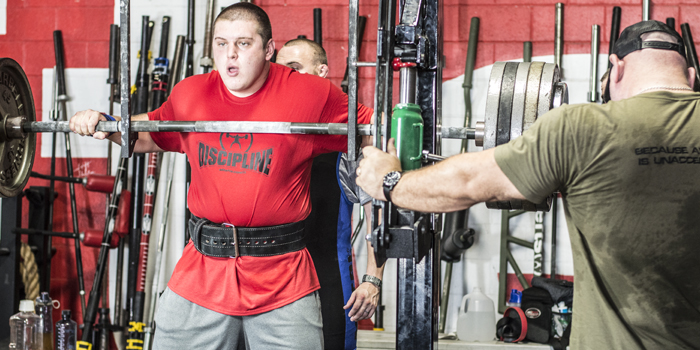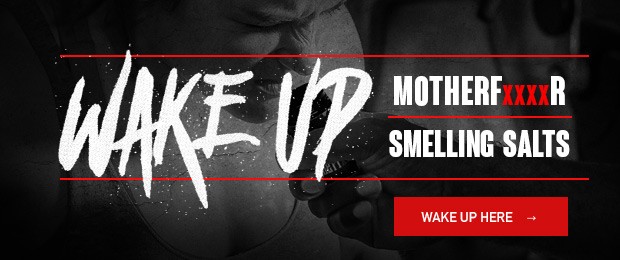
In my last article, "Flow, The Void, and You," I talked about how the attainment of and existence in a flow state optimizes your ability to float on the peak of your arousal curve and perform to the best of your ability.
While the flow state is interesting to talk about as a psychological concept, it can be difficult for some people to fully grasp. Viewed as simply a scientific word used to describe a feeling that bears different meanings and experiences to many, the importance of flow can easily be lost in translation.
Indeed, flow is extremely important. Flow is what is what stands between your second attempt (a PR you believed yourself capable of) and your third attempt (something thought unattainable by many). Flow is often an integral part of overall victories, national championships, and world records.
"But what about drive or the will to conquer?" you might ask. Well yes, of course. The top tier athletes will always possess those qualities of optimal performance. It is part of what makes them the top tier. However, it's interesting to consider the sociological impact that flow as a theory can have on one's ability to rationalize another person's performance — especially in our industry, where success in a certain sport can easily be dismissed by many as having access to or mastery of certain supplements or training programs. It is all too easy to point fingers. However, have you thought of the implications of whether or not the ability to be amazing really does lie inside of you—existing as flow—simply lying dormant?
Well, it just might. Steven Kotler sure seems to think so:
So what are these 17 triggers that Steven refers to? For simplicity, I'll refer back to examples from the sport of powerlifting. To start, they get broken down into four categories:
- Psychological
- Environmental
- Social
- Creative
Psychological
1. Intensely Focused Attention
A simple concept, this refers back to the lifter's concentration towards the task at hand. Being focused on the present moment is crucial to success. An overload of thinking dedicated to past performances or future uncertainty is a recipe for disaster — live in the present moment and give it everything you have.
2. Clear Goals
Again, simple: you are at your meet for a reason. Whether it's to break a PR or to crush a world record, you must have clear goals intended for your performance. Action without a goal has no direction.
3. Immediate Feedback
Are warm-up weights feeling light? Does your body feel recovered properly? Do you feel explosive? Do you know what you will need to account for? Being in tune with your body and interpreting immediate physiological feedback is necessary to determine your near future capabilities.
4. The Challenge/Skills Ratio
I spoke on this briefly here. The level of challenge must be in line with your skill. A powerlifter would never expect perfection at performing a record clean and jerk, yet when matched with a skill they have practiced over and over, the challenge/skill ratio become much more even.
Environmental
5. High Consequences
In powerlifting, you are constantly straining your body's physiological capabilities and there will always be high consequences. A powerlifter must accept the possibility of eating a 600-pounds bench attempt as a potential consequence. A great example of this in action is when Dave talked about coming back from a major pec tear. He used the mental imagery of ripping both pecs off to heighten his arousal curve and kickstart his flow state.
6. Rich Environment
Environments must be challenging in ways we do not expect — this allows us to stay fluid in the moment and to think without thinking. A rich environment involves complexities that you may not have directly prepared for, yet are skilled enough to handle — this keeps you from getting bored.
7. Deep Embodiment
While being faced with minor unpredictability, our bodies are more attuned to adapt on the fly, subconsciously understanding that things might change in an instant.
Social
8. Serious Concentration
Do your team members understand the gravity of what you are about to attempt? Do they know that their actions must be calculated to ensure a successful meet performance?
9. Shared, Clear Goals
Does your coach or handler know what today's meet goals are? Do they share the same wishes of aspiration for you as you do for yourself? Having shared goals with your teammates reinforces what you are working toward.
10. Good Communication
Have you communicated with your coach or your handler how you are feeling? Do they understand your thoughts and feelings going into this meet or attempt? Having clear communication diffuses tension on both sides and allows you to operate effectively on a mental level, trusting your teammate.
11. Familiarity
Are you and your coach, teammates, or handler well-acquainted with each other? Does your coach understand your weaknesses? Being familiar with your teammates or even opposition helps you to connect on a social level and either work together or work against with direction.
12. Equal Participation
Is your coach, team, or handler just as participatory in your competition as you might be? You must ensure that they, too, are willing to put in the work to help you.
13. Risk
Does your coach, team, or handler understand the risks of your attempt?
14. Sense of Control
Do you feel in control of the social dynamic? Do you feel that you control the conversation and direction with your coach, team, or handler?
15. Close Listening
Does your handler listen to you? You must be able to completely communicate your needs on the platform, from a hand-off, to a ritual, a set-up, or a pump-up.
16. Always Say Yes
Does you social system encourage synergy? You should be trying to work together, not limiting each other.
Creative
17. Creativity
Finally, you must be able to be creative under pressure. Learning to cock your wrists back under a near-lockout bench on the fly is a skill that comes from simply being creative. Do not be afraid to try different skills and make them work for you.
These 17 triggers may serve as a checklist to ensure optimal flow states and encourage proper performance, but remember, your mileage may vary. While not every one may apply to your situation, simply being able to account for and understand/apply the majority will undoubtedly increase your odds of securing optimal flow states for a performance you will never forget.
References
- Parts adapted from: "The Rise of Superman: Decoding the Science of Ultimate Human Performance" by Steven Kotler.
- Kotler, Steven. "The Rise of Superman: 17 Flow Triggers." Http://www.slideshare.net/StevenKotler/17-flow-triggers/29-SOCIAL_TRIGGER_9Always_Say_YesThis. N.p., n.d. Web. 24 Aug. 2016.










(Oh yes, and Kotler is wrong)
Assumptions
1. Opioid systems (pleasure) are activated when the covert musculature is inactive or relaxed, and suppressed when the covert musculature is active (a state of tension).
2. Dopamine systems (attentive arousal) are activated upon the perception or anticipation of positive act-outcome discrepancy (or novelty) and are suppressed when present or anticipated outcomes are predictable or negative (boredom, depression).
3. When concurrently activated, opioid and dopamine systems can interact and co-stimulate each other, and result in self-reports of ecstatic or peak experience.
Prediction
response contingencies that induce relaxation (e.g. mindfulness protocols) and attentive arousal (e.g. meaningful behavior) will result in the co-activation of both systems with self-reports of arousal and pleasure and are subjectively reported as ‘flow’ or ‘peak’ experiences.
Proof
Self-reports of peak experiences without exception occur during states of relaxation coupled with the continuous anticipation of high and positive act-outcome discrepancy (e.g. creative, sporting, and other meaningful behavior). (pp.82-86 of linked book below). Besides being verifiable on its face, the hypothesis also provides the procedural means for its easy falsification. (pp. 47-52). To wit, simply consistently engage in mindfulness (a relaxation protocol) while consistently pursuing meaningful behavior, and you will feel alert, aroused, and feel good to boot. That’s it.
https://www.scribd.com/doc/284056765/The-Book-of-Rest-The-Odd-Psychology-of-Doing-Nothing
also at doctormezmer.com